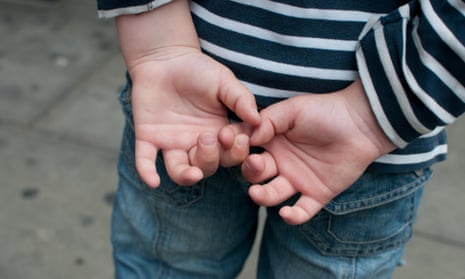The biggest independent providers of children’s care in England made profits of more than £300m last year, as concern mounts over the conditions that some children are being placed in and the spiralling costs for councils.
Fee income for the 20 largest operators of independent children’s care totalled £1.63bn last year, a 6.5% increase on the previous year. And 19% of that – £310m – was recorded as profit, according to an independent analysis. Half of the top 20 providers have some private equity or sovereign wealth fund ownership.
Council spending on independent children’s care in England has more than doubled in six years. In 2021-22, spending on independently run residential care for vulnerable children increased by 11% on the previous year.
This comes with the number of children in care at its highest level since before the pandemic: 82,170 in England. There are also concerns among councils over the indebtedness of some of the main providers.
The report was commissioned from Revolution Consulting by the Local Government Association (LGA), which worried that increasing fees were putting council budgets under immense pressure. The report also raised concerns about financial transparency in the sector, given a significant rise in mergers and acquisitions.
One company to increase profits last year was Your Chapter Holdings. Accounts out this month show profits rising from £1.7m to £2.2m. The company was formerly called Care 4 Children but changed its name after criticisms over the care it provided.
Just last month, Ofsted warned that Your Chapter had failed to sufficiently improve one home, which it had deemed “inadequate”. It stated: “There are serious and/or widespread failures that mean children and young people are not protected or their welfare is not promoted or safeguarded.”
A spokesperson for the provider said: “We strive continuously to improve and to provide the best possible care and education for the children and young people in our care.”
Katharine Sacks-Jones, chief executive of the Become charity for children in care and young care leavers, said: “There are serious questions to ask when we have a care system in crisis, a chronic shortage of homes for children, local councils struggling and private providers making ever-increasing profits. We know children in private provision are more likely to be placed away from their local area and the people and places that matter to them.
“Children in care, who have experienced significant trauma, must not be seen as a commodity. This is public money that should be spent on providing a system where children get the support and stability they need.”
Local authorities report spending £12.8bn on children’s social care in 2022-23, compared with £6.6bn in 2012-13. Senior figures fear children’s social care is affecting all other areas of spending.
“What matters most for children who can’t live with their birth parents is that they feel safe, loved and supported, in homes that best suit their needs,” said Louise Gittins, chair of the LGA’s children and young people board. “While many providers work hard to make sure this is the case, it is wrong that some are making excessive profit from this.
after newsletter promotion
“As the report shows, spending on residential care placements for children has increased dramatically in recent years as councils have sought to find the best homes for record numbers of children in care, while mergers and acquisitions have seen some large independent providers grow significantly. Yet while councils are having to divert more and more money away from early help services and into homes for children in care, the largest privately run companies continue to bring in huge profits.”
The Children’s Homes Association said it shared these concerns, particularly at levels of debt carried by large private equity providers, but that this did not reflect the sector as a whole.
“The majority of our members are micro or small providers that achieve small margins to ensure the viability of their organisations, and critically are not carrying significant levels of debt,” it said. “The independent sector consistently provides care at a significantly lower cost than local authorities. This, combined with caring for a higher-need cohort of children and young people, demonstrates value for money.”
